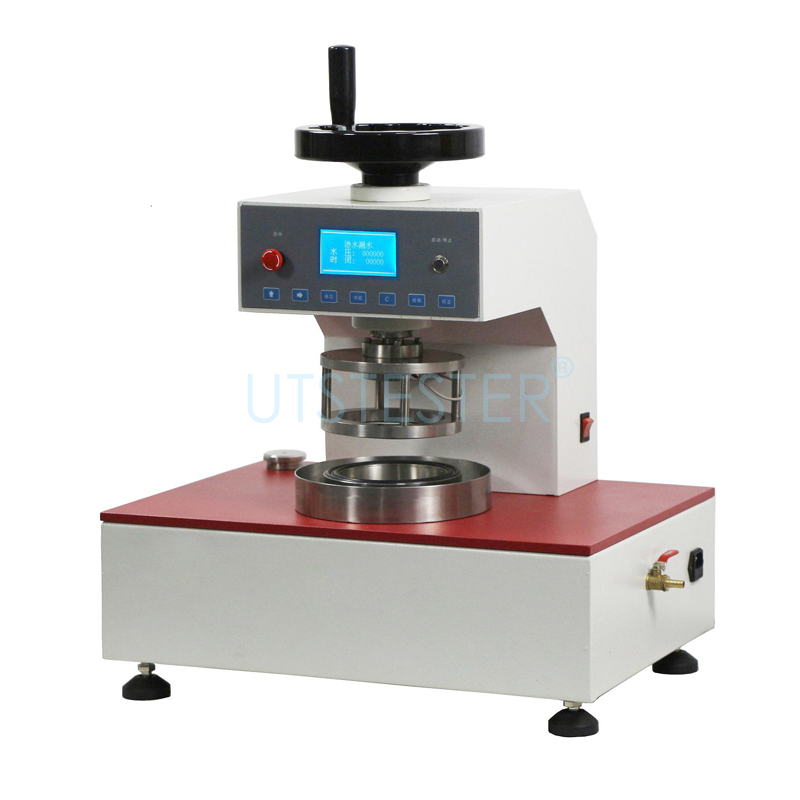 +86 152 6060 5085
+86 152 6060 5085
 +86 152 6060 5085
+86 152 6060 5085
2019-03-26
The hydrostatic tester test device is composed of stainless steel material processing, providing a horizontal test platform, on the platform there is a 100cm2 test groove, test groove with rubber o-type sealing ring, pressure sensor installed in the test hole. There is also a horizontal bubble on the platform, which can control the level of the platform by rotating the footer. Above the platform is a fixing frame, which can make the pressing Triangulum cover coincide with the test groove. The inner diameter area of the pressing Triangulum cover is 100cm2. The pressing triangulated cover can be moved up and down by the rotating handle, and the cloth sample can be placed and clamped for testing. Below the platform is the hydrostatic pressure supply department, which is composed of water storage tank, electromagnetic pump, pipe, water level inspection, water discharge valve, calibration interface and so on.
Testing principle:
Increasing (dynamic) or uniform (static) water pressure is applied to the sample until water seeps from three different sites on the sample. After at least 3 samples are tested, the average maximum water pressure (measured in mBar or cmH2O) of the fabric is measured and calculated, and this value is the water-repellent property of the sample.
The specific method is that the sample is fixed on the test area of the standard area. The air compressor adds the air of 0-5bar into a water tank filled with distilled water and ACTS the water with a certain pressure on the sample. It can be tested either dynamically or statically:

(1) dynamic method: the hydrostatic resistance of the sample can be determined by testing the pressure when a fixed number of water droplets ooze out of one side of the sample that is not in contact with water at a certain boost rate.
(2) static method: determine the hydrostatic resistance of the material by testing the seepage of the sample after holding the pressure for a certain period of time under a certain hydrostatic pressure.
Notes:
1. The sample should be placed horizontally and not bulged;
2. The area under or above the fabric under sustained rising water pressure is 100cm2;
3. The clamping device shall not leak during the test;
4. The sample will not slip in the clamping device;
5. Minimize the possibility of water seepage on the edge of the clamping device.
Email: hello@utstesters.com
Web: www.utstesters.com
Tel: +86 596 7686689
Direct line: +86 15260605085
Previous article :
Washing fastness tester washing fastness meter testNext article :
AATCC American Standard AATCC shrinkage dryer Latest Information